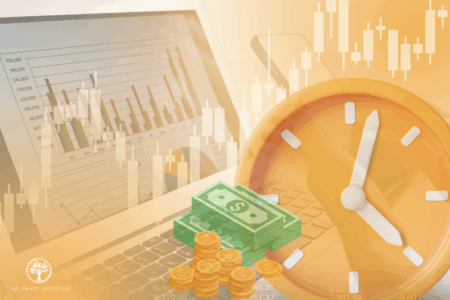JPMorgan Chase (NYSE: JPM) is currently the largest bank in the USA by total assets. Because of this status, JPMorgan is naturally able to feel the pulse of the country’s economy. The bank’s latest earnings release and conference call – for the third quarter of 2023 – happened just last week and contained useful insights on the state of American consumers and businesses. The bottom-line is this: Consumer spending and the overall economic environment is solid, but there are substantial risks on the horizon.
What’s shown between the two horizontal lines below are quotes from JPMorgan’s management team that I picked up from the call.
1. Consumer spending is stable, but consumers are now spending their cash buffers down to pre-pandemic levels
Consumer spend growth has now reverted to pre-pandemic trends with nominal spend for customer stable and relatively flat year-on-year. Cash buffers continue to normalize to pre-pandemic levels with lower income groups normalizing faster.
2. Auto loan originations and auto loan growth were strong
And in Auto, originations were $10.2 billion, up 36% year-on-year as we saw competitors pull back and we gained market share…
…In Auto, we’ve also seen pretty robust loan growth recently, both as a function sort of slightly more competitive pricing on our side as the industry was a little bit slow to raise rates. And so we lost some share previously, and that’s come back now. And generally, the supply chain situation is better, so that’s been supported. As we look forward there, it should be a little bit more muted.
3. Businesses have a healthy appetite for funding from capital markets…
In terms of the outlook, we’re encouraged by the level of capital markets activity in September, and we have a healthy pipeline going into the fourth quarter.
4. …although loan demand from businesses appears to be relatively muted
And I think generally in Wholesale, the loan growth story is going to be driven just by the economic environment. So depending on what you believe about soft landing, mild recession, no lending, we have slightly lower or slightly higher loan growth. But in any case, I would expect it to be relatively muted.
5. Loan losses (a.k.a net charge-off rate) for credit cards is improving, with prior expectation for 2023 Card net charge-off rate at 2.6% compared to the current expectation of 2.5%…
On credit, we now expect the 2023 Card net charge-off rate to be approximately 2.5%, mostly driven by denominator effects due to recent balance growth.
6. …and loan growth in credit cards is still robust, although it has tracked down somewhat
So we were seeing very robust loan growth in Card, and that’s coming from both spending growth and the normalization of revolving balances. As we look forward, we’re still optimistic about that, but it will probably be a little bit more muted than it has been during this normalization period.
7. The near-term outlook for the US economy has improved
I think our U.S. economists had their central case outlook to include a very mild recession with, I think, 2 quarters of negative 0.5% of GDP growth in the fourth quarter and first quarter of this year. And that then got revised out early this quarter to now have sort of modest growth, I think around 1% for a few quarters into 2024.
8. There is no weakness from both consumers and businesses in meeting debt-obligations
And I think your other question was, where am I seeing softness in credit? And I think the answer to that is actually nowhere, roughly, or certainly nowhere that’s not expected. Meaning we continue to see the normalization story play out in consumer more or less exactly as expected. And then, of course, we are seeing a trickle of charge-offs coming through the office space. You see that in the charge-off number of the Commercial Bank. But the numbers are very small and more or less just the realization of the allowance that we’ve already built there.
9. Demand for housing loans is constrained
And of course, Home Lending remains fairly constrained both by rates and market conditions.
10. Overall economic picture looks solid, but there are reasons for caution – in fact, JPMorgan’s CEO, Jamie Dimon, thinks the world may be in the most dangerous environment seen in decades
And of course, the overall economic picture, at least currently, looks solid. The sort of immaculate disinflation trade is actually happening. So those are all reasons to be a little bit optimistic in the near term, but it’s tempered with quite a bit of caution…
…However, persistently tight labor markets as well as extremely high government debt levels with the largest peacetime fiscal deficits ever are increasing the risks that inflation remains elevated and that interest rates rise further from here. Additionally, we still do not know the longer-term consequences of quantitative tightening, which reduces liquidity in the system at a time when market-making capabilities are increasingly limited by regulations. Furthermore, the war in Ukraine compounded by last week’s attacks on Israel may have far-reaching impacts on energy and food markets, global trade, and geopolitical relationships. This may be the most dangerous time the world has seen in decades.
Note: An earlier version of this article was published at The Good Investors, a personal blog run by our friends.
Want to pave your child’s road to being a millionaire? Start today so they shield their money from pricey hawker meals and sky-high HDB costs. The first step is to set aside money to invest in dividend stocks. The second step is to grab a copy of our latest FREE report. Inside, we show you the secrets to investing for your children, including 3 SGX stocks to consider today for a wealthier future. Click HERE to download a copy now.
Disclosure: Ser Jing does not have an interest in any of the companies mentioned.





